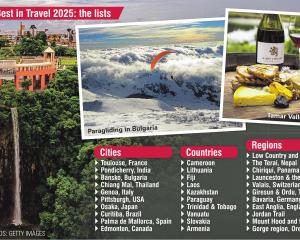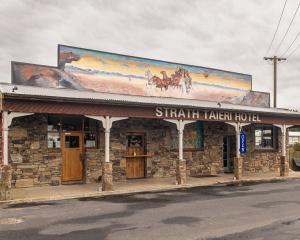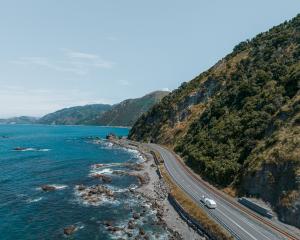Andrew Marshall spends a few days in La Rioja’s capital Logrono, to discover a region rich in wine culture and local cuisine.
Located in the north of the Iberian Peninsula and well away from the main Spanish tourist trail is La Rioja, which just happens to be one of the biggest and best wine-producing regions in the country. The provincial capital Logrono, is an attractive and prosperous city of about 150,000, and with an old quarter of tree-studded plazas, elegant streets and hidden corners, all presided over by the distinctive twin spires of the magnificent 16th-Century Santa Maria de la Redonda cathedral, it’s a pleasant base to spend a few days while exploring the region.
One of Logrono’s big drawcards is its inherent wine culture around every corner. There are literally hundreds of wineries or bodegas to visit (close to the city and further afield), ranging from cutting-edge architectural designs to more old school, where you can learn everything and more about Rioja wine production, taste the wines and of course buy a bottle or two. There is even the Battala del Vino (a wine battle) in the town of Haro, and held in Logrono every September is the Fiesta de San Mateo which coincides with the annual vendimia (grape harvest) featuring traditional grape-treading methods, floats and wine tasting.
The region’s varied local cuisine pairs beautifully with La Rioja’s world-class wines, and Logrono in particular is rapidly gaining a culinary reputation to rival anywhere in Spain, only enhanced by its ‘Gastronomic Capital of Spain’ award. Our base in Logrono is the excellent boutique hotel Eurostars Marques de Vallejo, housed within a historic building dating from the early 20th century. Enjoying a fine location right in the heart of city, the hotel is only a few steps from the city’s medieval old quarter, offering countless restaurants, taverns and pinchos bars (more about these later). After checking in, we head to the lounge bar to enjoy a welcoming glass of Rioja. After taking a sip, we both grin at each other and raise our glasses — it’s a great beginning to our La Rioja wine and gastronomy trip.
In the coming days we make excursions to several wineries within a short drive of Logrono including Marques de Vargas, Campo Viejo and the architecturally stunning Marques de Riscal in the walled medieval town of Elciego. A mix of innovation and tradition, the oldest winery in La Rioja was redesigned by Frank Gehry (the architect of the Guggenheim Museum in Bilbao) a few years ago, and its futuristic design wouldn’t look out of place in outer space. The bodega specialises in full-bodied reds produced from old vines, and it’s worth taking the tour of the old underground facility and to witness the hotel close up. There is also a Michelin-star restaurant on site.
Well worth a visit or stay is Finca de los Arandinos, a unique designer project combining a cutting-edge hotel with spa alongside a restaurant and winery. This inspiring place designed by David Delfin sits on top of a small hill in the foothills of the Sierra de Moncalvillo, surrounded by vineyards, olive trees and mountains. The winery forms an integral part of the complex and visits to the on-site bodega ends with a tasting of finca’s portfolio of wines. Equally good is the Tierra Restaurant (recommended by the Michelin Guide) serving delicious locally-sourced cuisine alongside local wines.
Underneath the streets of Logrono are several fascinating underground wine cellars called calados, an excellent example being St Gregory’s Cellar (Calle Ruavieja 29), an amazing 30m-long cellar built with blocks of stone in the 16th century. Not to be missed is the superb Vivanco Museum of Wine Culture in Briones — a winery combined with a massive educational centre devoted to the relationship between man and wine over 8000 years of history. This world-class museum deserves a full day to fully appreciate the multitude of wine artefacts, art works, displays, plus a gift shop and wine tasting corner, set out over 4000sqm and six rooms.
In addition to exploring the region’s wine culture, the gastronomy of La Rioja is rich and varied, traditionally based on produce from the land. Asparagus and peppers, vegetable casseroles (menestras), meat braised in red wine, roast lamb, pork, fresh fruit and desserts make up many typical dishes although fish such as salt cod, tuna and sea bream also feature on restaurant menus. If there’s one dish that is famous for being typically Riojan, it’s "potatoes with chorizo", with as many variations as there are chefs. Potatoes are also the main ingredient of ranchos and calderetas, a rustic stew made in an iron pot usually containing lamb and whatever ingredients come to hand.
On our final evening in La Rioja, we take a short stroll from our hotel to Calle del Laurel, famous for some of northern Spain’s finest pinchos bars. Pinchos, also called pintxos, are the Basque region’s take on tapas, basically snack-size portions of food, that could be anything from simple tortilla Espanola (potato omelette) or anchovies on bread, to more elaborate miniature creations of haute cuisine. They are called pinchos because many of them have a pincho (Spanish for spike), typically a toothpick or skewer holding the food on a slice of bread. There are dozens of pinchos bars and hundreds of pinchos to choose from, with some bars offering several varieties, while others are famous for just one. They are usually cheap, and when paired with a glass of local red wine, usually cost about €2.50 ($NZ4.44).
Modern gastro bars and old-world taverns rub shoulders with each other as we arrive at the start of buzzing Calle del Laurel. The choice of bars and their window displays of pinchos can be bewildering, but here’s a trio to get you started: The house specialty at La Taberna del Laurel (Calle del Laurel, 7) is patatas bravas (potatoes in spicy tomato sauce), Bar Lorenzo Tio Agus (Calle del Laurel, 4) majors on simply grilled chistorra (chorizo with sweet paprika and garlic) and lamb kebabs, while Bar Soriano (Calle del Laurel, 2) is famed for its delicious mushroom pinchos which have been served for the past 40 years — three mushrooms grilled and smothered with a rich and buttery sauce of garlic and olive oil, skewered on a slice of baguette and crowned with a shrimp.
For an expert’s view and to learn more about the marriage of Rioja and pinchos, we join Jose Ramon Jimenez Berger otherwise known as El Educador en Vinos (the wine educator). Jose is a well-known character and television personality, in addition to offering guided tours of a selection of pinchos bars in and around Calle de Laurel, where a different Rioja is served alongside different pinchos in a selection of bars.
"I think this is the best way to experience the life of the town", says Jose inside Bar El Muro.
"Going out for pinchos is a great social activity, and I love nothing more than getting a group of friends together and visiting some favourite spots."
As another combination of pinchos and glasses of Rioja arrive on the bar’s countertop, we couldn’t agree with him more . . .
Info file
Where To Stay
Eurostars Marques de Vallejo (Logrono): www.eurostarshotels.co.uk
Finca de los Arandinos: www.fincadelosarandinos.com
Where To Dine (Logrono)
La Cocina de Ramon: 30, Calle Portales. lacocinaderamon.es
La Quisquillosa: C. Juan Lobo, 1, 26001 Logrono laquisquillosa.com
Useful Websites
The Wine Educator "El Educador en Vinos" (wine tasting/wine pairings and winery visits): www.eleducadorenvinos.com
Vivanco Museum of Wine Culture: vivancoculturadevino.es/es/
Further Information
La Rioja Turismo: www.lariojaturismo.com
Visita Logrono: www.visitalogrono.com









 Eurostars Marques de Vallejo in central Logrono provides an excellent base for exploring more of Rioja province.
Info file
Eurostars Marques de Vallejo in central Logrono provides an excellent base for exploring more of Rioja province.
Info file












